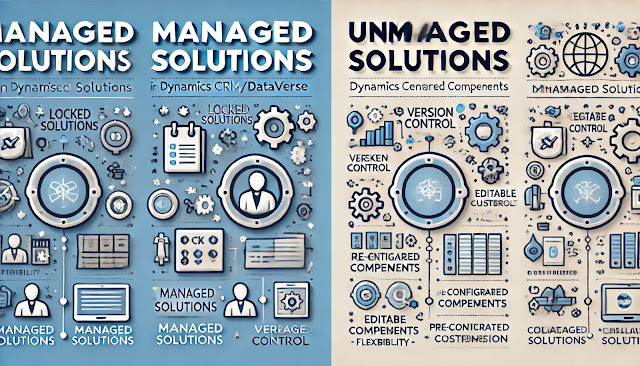Dynamics 365 Field Service : Configure properties and property templates
Field Service operations often involve handling complex service tasks across diverse assets, each with their own specifications—like dimensions, warranty details, or serial numbers. To manage such complexity in a consistent and scalable manner, Dynamics 365 Field Service provides two key features:
- Properties
- Property Templates
These tools empower technicians and service managers to track standardized attributes across different types of customer assets (installed products), services, and locations.
What Are Properties?
Properties are custom fields or data points that are associated with customer assets (also known as installed products). These can include details like:
- Serial Number
- Voltage
- Expiry Date
- Oil Type
- Calibration Frequency
- Warranty Status
- Asset Condition
Each property acts as a reusable data point that can be added to different assets or services.
Example: Suppose you're servicing industrial chillers. You may want to track the coolant level, temperature threshold, and last maintenance date for each unit. These would all be defined as properties.
What Are Property Templates?
While individual properties are useful, many companies deal with similar types of assets. Instead of manually assigning each property to each asset, you can bundle related properties into a template—this is called a Property Template.
A Property Template is a predefined set of properties that you can apply to:
- Customer Assets
- Work Order Products
- Work Order Services
This simplifies property management, especially when dealing with hundreds or thousands of assets.
Benefit: Define once, reuse multiple times.
How to Configure Properties in Dynamics 365 Field Service
Step 1: Navigate to Properties
1. Open Field Service app.
2. Go to Settings → Properties.
3. Click + New.
Step 2: Define a Property
You’ll be prompted to fill out details like:
- Name: e.g., “Voltage Level”
- Data Type: Text, Number, Date, Boolean, etc.
- Minimum/Maximum Values (optional)
- Unit of Measure (optional)
- Is Required: Yes/No
- Default Value: (optional default to auto-fill)
Step 3: Save the Property
- Once you define and save a property, it becomes available to be included in any template or asset.
How to Configure Property Templates
Step 1: Navigate to Property Templates
1. Go to Settings → Property Templates.
2. Click + New.
Step 2: Create Template
Fill in:
- Name: e.g., “HVAC Unit Template”
- Description: Optional
Step 3: Add Properties to Template
1. After creating the template, scroll to Related → Properties.
2. Click + Add New Property.
3. Choose from existing properties or create new ones.
4. Set Default Values (if needed) for each.
Step 4: Apply Template to Asset Types
You can associate this template with:
- Customer Assets
- Work Order Products
- Work Order Services
So, the next time you add an asset of a specific type, the related properties will be auto-applied.
Real-world Scenario
Let’s say you service industrial diesel generators. You want to track the following:
- Fuel Type
- Tank Capacity
- Operating Voltage
- Last Inspection Date
Instead of configuring these fields for every generator manually, you:
1. Create each of the above as individual properties.
2. Bundle them into a "Diesel Generator Template".
3. Apply this template to any new generator added to the system.
Now, every time a technician opens a work order or views a customer asset, they see all the critical info in a consistent format.
Pro Tips
- Use validation (like min/max values) to prevent incorrect data entry.
- Regularly review and update templates as new asset types are introduced.
- Combine property templates with IoT alerts and inspections for advanced scenarios.
Conclusion
Properties and property templates in Dynamics 365 Field Service are powerful tools that bring consistency, structure, and clarity to your field operations. By setting up standardized attributes and applying them across assets and services, you ensure that your technicians are always working with the right data—leading to faster resolution times, better service quality, and happy customers.












Comments
Post a Comment